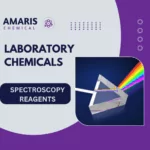Sodium Thiosulphate in Photography: How This Chemical Revolutionized the Industry
Sodium thiosulphate, often referred to as hypo, is a chemical that has played a pivotal role in the evolution of photography, particularly in the development of photographic films and prints. Its impact on the industry can’t be overstated, as it enabled photographers to unlock new levels of creativity, efficiency, and quality in their work. Here’s how sodium thiosulphate revolutionized photography.
The Early Days of Photography
Before the invention of sodium thiosulphate, early photographic processes such as daguerreotypes and tintypes used hazardous chemicals that were inefficient and limited in scope. Early photographs were created on metal plates or glass that captured an image but required further processing to make the image permanent. This process often involved dangerous chemicals and lengthy exposure times, leading to inconsistent results.
The Introduction of Sodium Thiosulphate
In the mid-19th century, sodium thiosulphate was introduced as a photographic fixer, marking a major advancement in the development of images. It was first used in the collodion wet plate process and later became the standard for photographic films. Its main function was to “fix” the image by dissolving the unexposed silver halide crystals from the photographic film, leaving behind only the exposed image.
Why Sodium Thiosulphate Matters
Before the introduction of hypo, photographic images could not be preserved long-term. Exposure to light or air would cause the image to fade or deteriorate. Sodium thiosulphate provided a solution by stabilizing the image and making it lightfast. As a result, photographers could produce prints that were not only sharper but also more durable. The chemical was also easy to use, affordable, and safer than earlier alternatives, making it a game-changer for both amateur and professional photographers.
The Role in Commercial Photography
Sodium thiosulphate made mass production of photographs possible. It enabled faster processing times in the darkroom and improved consistency in image quality. As photography became more widespread in the late 19th and early 20th centuries, it facilitated the rise of commercial photography, from portrait studios to advertising photography.
Conclusion
In conclusion, sodium thiosulphate‘s ability to fix and stabilize photographic images was revolutionary. It streamlined the photographic process, making it safer, faster, and more reliable. Today, while digital photography has replaced film for many applications, sodium thiosulphate remains a cornerstone in the history of photography, shaping the art and industry for generations.


 Emollients
Emollients Humectants
Humectants UV Filters
UV Filters Surfactants (cosmetic)
Surfactants (cosmetic) Preservatives (cosmetic)
Preservatives (cosmetic) Fragrances and Essential Oils
Fragrances and Essential Oils Antioxidants (cosmetics)
Antioxidants (cosmetics)
 Solvents (lab)
Solvents (lab) Chromatography Chemicals
Chromatography Chemicals Microbiology and Cell Culture Reagents
Microbiology and Cell Culture Reagents Biochemical Reagents
Biochemical Reagents Inorganic and Organic Standards
Inorganic and Organic Standards Spectroscopy Reagents
Spectroscopy Reagents Molecular Biology Reagents
Molecular Biology Reagents
 Precious Metal Extraction Agents
Precious Metal Extraction Agents
 Plasticizers
Plasticizers Polymerization Initiators
Polymerization Initiators Stabilizers
Stabilizers Monomers
Monomers Fillers and Reinforcements
Fillers and Reinforcements Antioxidants (plastics)
Antioxidants (plastics) Colorants (plastic pigments,Dyes)
Colorants (plastic pigments,Dyes)
 Fertilizers
Fertilizers Plant Growth Regulators
Plant Growth Regulators Soil Conditioners
Soil Conditioners Animal Feed Additives
Animal Feed Additives Biostimulants
Biostimulants
 Dough Conditioners
Dough Conditioners Flour Treatments
Flour Treatments Fat Replacers
Fat Replacers Preservatives (baking)
Preservatives (baking)
 Surfactants (cleaning)
Surfactants (cleaning) Builders
Builders Bleaching Agents
Bleaching Agents Enzymes
Enzymes Solvents (cleaning)
Solvents (cleaning) Fragrances
Fragrances Disinfectant
Disinfectant Metal cleaning
Metal cleaning
 Binders/Resins
Binders/Resins Pigments
Pigments Solvents (paint)
Solvents (paint) Additives
Additives Driers
Driers Anti-Corrosion Agents
Anti-Corrosion Agents Specialty Coatings
Specialty Coatings Functional Coatings
Functional Coatings Application-Specific Coatings
Application-Specific Coatings
 Sealants and Adhesives
Sealants and Adhesives
 Biodegradable Surfactants
Biodegradable Surfactants Bio-based Solvents
Bio-based Solvents Renewable Polymers
Renewable Polymers Carbon Capture Chemicals
Carbon Capture Chemicals Wastewater Treatment Chemicals
Wastewater Treatment Chemicals
 Preservatives (food)
Preservatives (food) Flavor Enhancers
Flavor Enhancers Acidulants
Acidulants Sweeteners
Sweeteners Emulsifiers
Emulsifiers Antioxidants (food)
Antioxidants (food) Colorants (food)
Colorants (food) Nutrient Supplements
Nutrient Supplements Nutraceutical Ingredients
Nutraceutical Ingredients
 Fresh Herbs
Fresh Herbs Whole Spices
Whole Spices Ground Spices
Ground Spices Spice Blends
Spice Blends
 Surfactants(oil)
Surfactants(oil)
 Antibiotics
Antibiotics Active Pharmaceutical Ingredients
Active Pharmaceutical Ingredients Excipients
Excipients Vaccine Adjuvants
Vaccine Adjuvants Nutraceutical Ingredients
Nutraceutical Ingredients Solvents (pharmaceutical)
Solvents (pharmaceutical)
 Automotive chemicals
Automotive chemicals Pyrotechnic Chemicals
Pyrotechnic Chemicals


 Vulcanizing Agents
Vulcanizing Agents Accelerators & Retarders
Accelerators & Retarders Antidegradants
Antidegradants Reinforcing Agents
Reinforcing Agents Plasticizers & Softeners
Plasticizers & Softeners Fillers & Extenders
Fillers & Extenders Blowing Agents
Blowing Agents Adhesion Promoters
Adhesion Promoters












